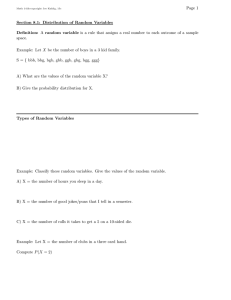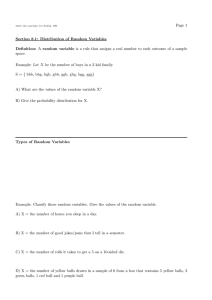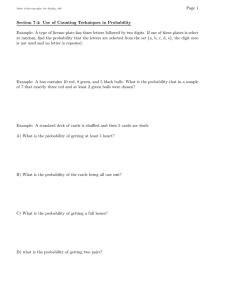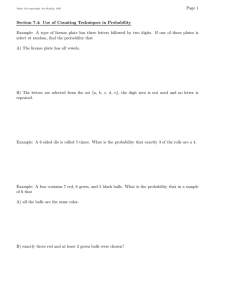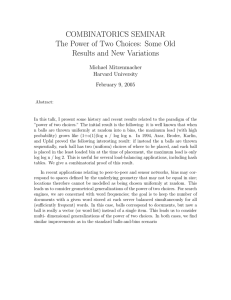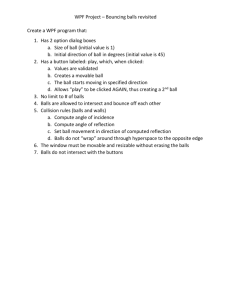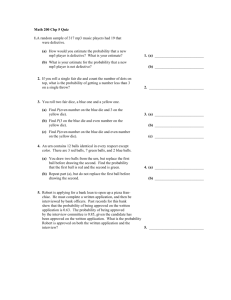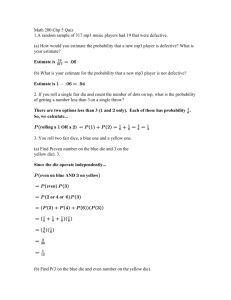Page 1 Section 3.1: Random Variables and Histograms
advertisement
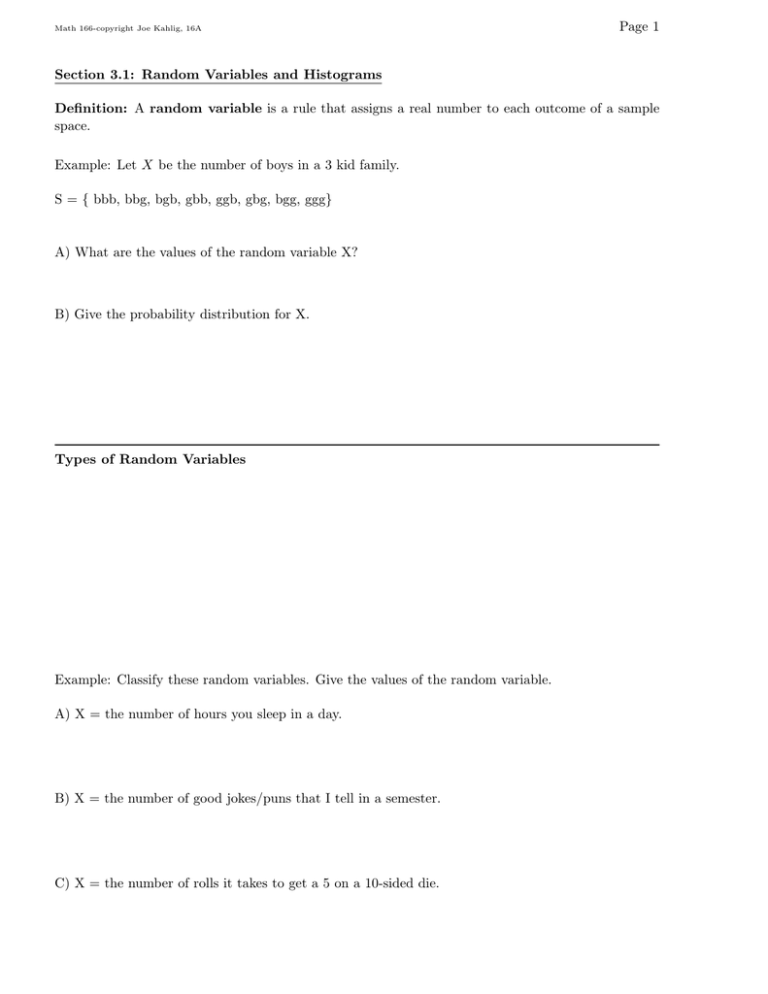
Math 166-copyright Joe Kahlig, 16A
Page 1
Section 3.1: Random Variables and Histograms
Definition: A random variable is a rule that assigns a real number to each outcome of a sample
space.
Example: Let X be the number of boys in a 3 kid family.
S = { bbb, bbg, bgb, gbb, ggb, gbg, bgg, ggg}
A) What are the values of the random variable X?
B) Give the probability distribution for X.
Types of Random Variables
Example: Classify these random variables. Give the values of the random variable.
A) X = the number of hours you sleep in a day.
B) X = the number of good jokes/puns that I tell in a semester.
C) X = the number of rolls it takes to get a 5 on a 10-sided die.
Page 2
Math 166-copyright Joe Kahlig, 16A
D) X = the number of draws it takes to get an Ace when drawing cards from a standard deck of card
without replacement.
E) X = the number of yellow balls drawn in a sample of 6 from a box that contains 5 yellow balls, 2
green balls, 1 red ball and 1 purple ball.
Example: Let X = the number of clubs in a five card hand.
Find P (X = 2)
Definition: A histogram is a way to present the probability distribution of a discrete random variable.
Example: Draw the probability distribution X.
X
2
3
4
5
7
prob.
0.2
0.1
0.15
0.4
0.15
Page 3
Math 166-copyright Joe Kahlig, 16A
Example: The following histogram is only missing the rectangle at x = 7.
A) Find P (X = 7)
0.3
0.2
0.1
B) Give the probability distribution for X.
1
2
3
4
5
6
7
8
C) Find P (2 ≤ X < 6) =
Example: A task consist of drawing a ball from a box containing 4 red, 3 green and 1 white and
replacing it after the color is noted.. Let the random variable X be the number of green balls drawn
when this task is repeated 6 times.
A) Compute P (X = 2)
B) Compute P (X < 5)
Definition: Given a sequence of n Bernoulli trials with the probability of success p and the probability of failure of q, the binomial distribution, for k = 0, ...n), is given by
P (X = k) = C(n, k)pk q n−k
